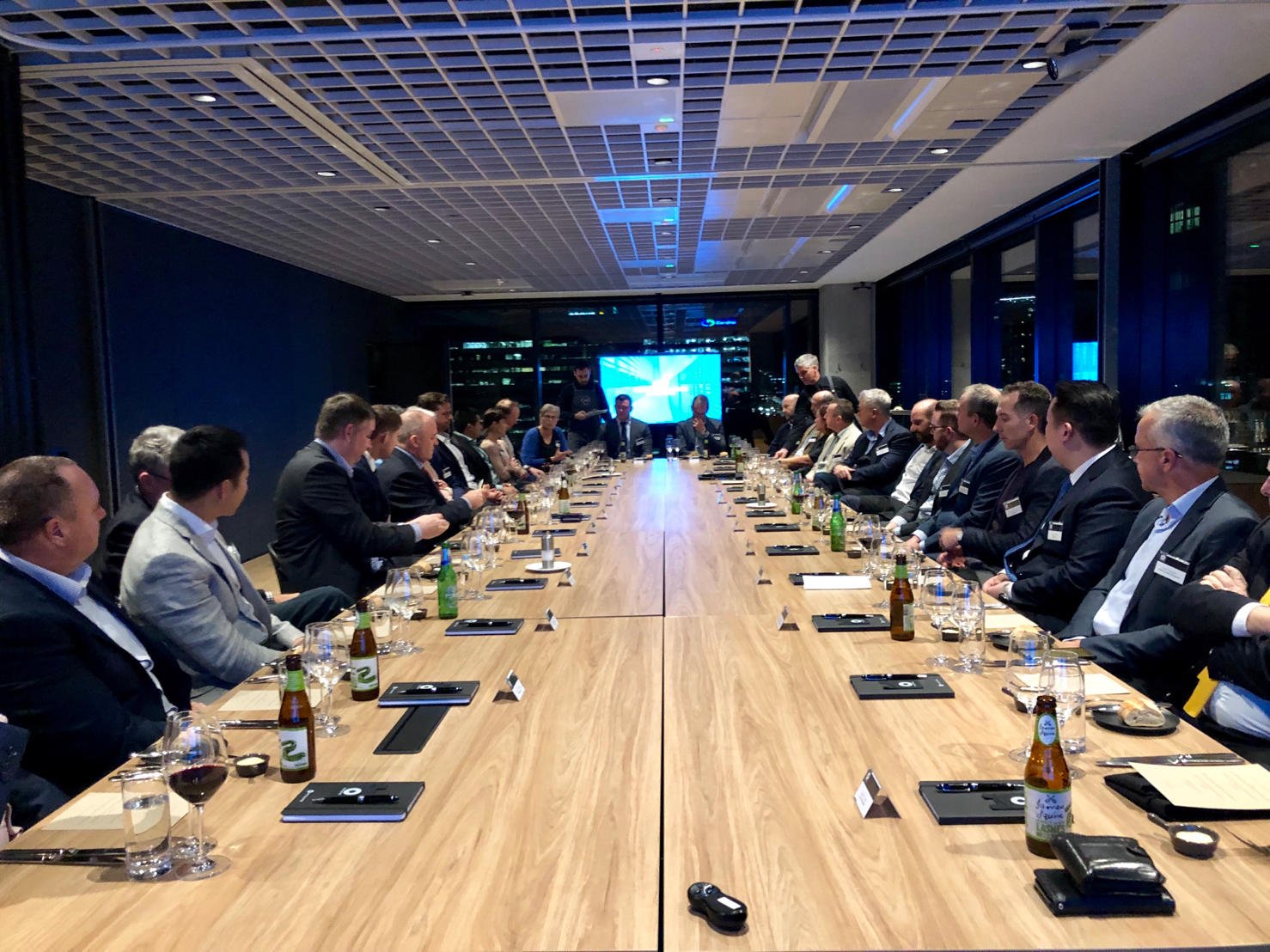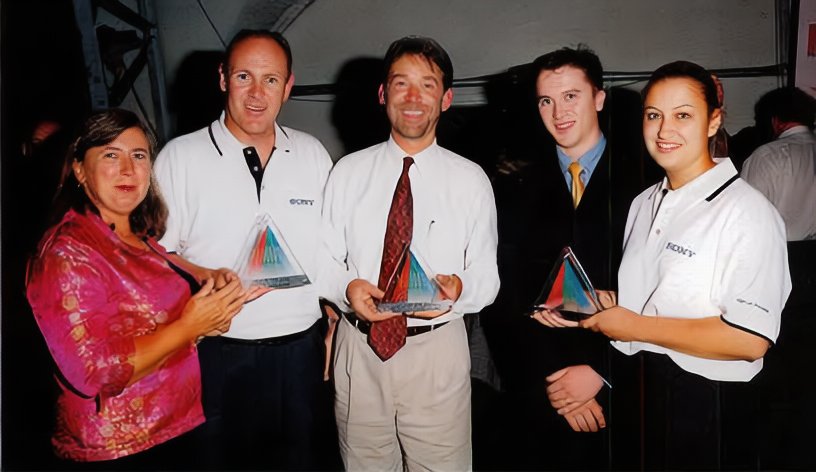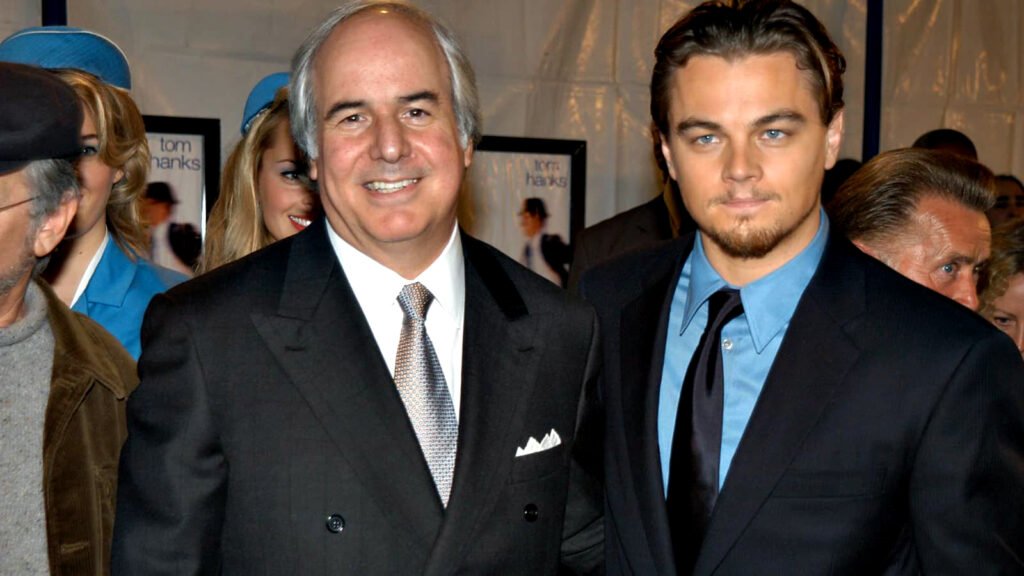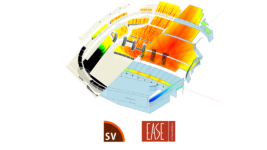News
23 Mar 2022
The Gaffa Tapes: The Audioviz Biz

Subscribe to CX E-News
With the invasion of Microsoft PowerPoint presentations in the mid 90s coinciding with advances in video conferencing, the definition of AV kind of morphed from audio/video into Audio Visual.
AV had previously been a world where AV technicians in the corporate arena typically carted overhead projectors, slide projectors, screens, small public address systems, and wireless microphones into conference rooms. When digital cast its worldwide net things changed inexorably.
I entered the Audio Visual arena in the late 90s. I was fortunate to be interviewed by the founder of Spaceage Communications, a high-tech Audio Visual company that was in the process of a lavish AV installation at the Macquarie Bank, Sydney.
Fortune had smiled upon me after years of being shunned by employers who didn’t want burnt-out musicians, roadies, or battle-weary music industry technicians. Here was an employer actually looking for that kind of background as he had worked in the entertainment industry. He particularly wanted someone who understood that Audio Visual presentation was theatre. Just like entertainment, live presentations required a lot of technical planning, immediate problem-solving, and dealing with the occasional prima donna. Above all, my employer was looking for someone who adhered to the old adage ‘the show must go on’.
The installation at the Macquarie Bank, which was built on top of the old Sydney GPO, tied video conferencing machines and audio/video equipment to advanced touch screen AV control panels in the main auditorium and other meeting rooms throughout the facility. Spaceage Communications went on to win the ENTECH 2000 Award for Best Audio Visual Integration Firm.

For the first two weeks I was placed on tools, assisting with the installation and getting trained up on the equipment, all the time in awe of the technical geniuses guiding me.
After two weeks I donned coat, collar and tie for the next couple of months facilitating the meetings and training the Macquarie Bank staff, which included their AV technician, Julie.
After the interim period of hand-holding, the bank didn’t want to go it alone, so I somehow ended up Audio Visual Manager of Macquarie Bank and their holdings at 10-20 Bond St, Sydney. Julie doffed her technician’s hat to become the Event Coordinator, and our team was born.
As the daily presentation meetings grew, sometimes thirty per day, we had to request extra staff. People with all sorts of technical qualifications applied and were hired and fired. The qualifications for getting hired were that you were willing to learn, be in your scheduled meeting room on time, and act in a professional manner. The catalyst for getting fired was the opposite. I didn’t have many rules. If you wanted to have an extended lunch in a city bar, you just made sure you had a good supply of mints and a reliable wristwatch.
Internet speeds were too slow in the late 90s for IP video conferencing, so it was all done via Telstra’s ISDN lines. Each ISDN line had a bandwidth of 64 Kbps, used in pairs as 128 Kbps, which was the accepted minimum for video and audio transmissions. We mostly used 384 Kbps, which used six Telstra ISDN lines.
384K may sound a bit primitive by today’s standards when we talk in megabits per second, but videoconferencing in that era was based on the H.263 compression standard. The H.263 standard was not to be sneezed at given it was an evolution of MPEG-2 (H.262), which was the standard for DVD and would become the digital television standard for Australia. In short, the pictures and audio were very good; and ISDN lines were dedicated lines, not shared transmission lines.
I had to be on-site in the auditorium at 7:30 am each morning to patch major cities around the world into video conferences where financial advisers would discuss market trends: things like how Indonesia’s low consumption of cola drinks was affecting the world market, or how you could make a stock market killing buying fifty-cent shares in a company that promised to magically recycle garbage into electrical energy.
I lost count of how many times I had to scamper up to a lectern where presenters had twisted away the gooseneck microphones because they considered them useless objects in their way. And it was not uncommon for presenters to wander away from lectern microphones altogether and continue their presentations without a word being heard by their dismayed worldwide audiences. In one instance, a presenter insisted it was our server and not her laptop causing the problem, before finally admitting that she had backed over it in her car that morning.
I mostly assigned someone else to the ubiquitous ‘death by PowerPoint’ presentations. But Frank Abagnale’s carousel of 35mm slides got my attention. Abagnale didn’t trust easily copied PowerPoint files, and since I’d never seen a presentation actually worth stealing, I decided to sit in.
Abagnale began by telling the audience he was a convicted US felon who was recruited by the FBI to assist with investigating document fraud. The presentation was amazing. Abagnale went into intricate detail of how easy it was to forge any document. Steven Spielberg was also impressed by Abagnale’s story, and just two years later he made the movie Catch Me If You Can starring Leonardo DiCaprio as Frank Abagnale and Tom Hanks as the FBI agent who pursued him.

The major service departments at Macquarie Bank were Reception, Catering, Audio Visual and IT. We in Audio Visual blended in with all departments. We adhered to things like not dumping a projector on a table where a waiter was about to serve the Bombe Alaska. And IT didn’t want to bother with prima donnas in meeting rooms, so they gave it to us. Hence, when asked in meeting rooms, “Are you IT?” We’d just say, “Yes.” And magically finding the client’s file on the server or knowing the minimal operations of a Windows or Mac laptop were the only IT skills required.
Whilst we had a seamless relationship with all the service departments, they didn’t have an amicable relationship with each other. And so, the bank disastrously hired a manager to oversee all departments. The new manager didn’t quite grasp the technical side of Audio Visual, and this bewilderment mutated into a form of wrecking ball diplomacy. We lost the long war of attrition, which destroyed the Audio Visual section and ultimately led to our clientele booking outside venues for their meetings. Julie stayed on for a time but eventually formed her own company, the Sydney Video Conference Centre. I was contracted as her technician, although my business card displayed the more dignified title of ‘Operations Manager’.
In 2003 we got the gig when Ian Thorpe announced to the world that he would wear the new Adidas JetConcept swim suit at the FINA World Championships in Barcelona.
Every mainstream Australian media channel plus the BBC started arriving at Julie’s conference room and dumping video and lighting equipment and asking technical questions. There was a director present who became overwhelmed by the technicalities, and subsequently slipped quietly out of the room.
The camera crews were great to work with, so it was agreed to use a single crew’s lighting equipment for the shoot. I took a feed from one of the Betacam cameras and patched it into Julie’s Polycom Viewstation. The videoconference had to run concurrent with an interactive audio stream wherein the Thorpedo had agreed to participate in a Q&A session, which was to be routed into the videoconference stream and the Q&A would be recorded on all the Betacam cameras.
I was made to model for the cameras on Thorpe’s stool before Thorpe took over. Since the director had left the room, all eyes were then on me as the clock counted down. Being an adrenaline junkie, I went for it. I even did that countdown thing where I went mute on the last two numbers and cued Thorpe on-camera with hand gestures. It took me years to get my head out of the clouds after that gig, but some of those I’ve earbashed with the story over the years may never recover.
Subscribe
Published monthly since 1991, our famous AV industry magazine is free for download or pay for print. Subscribers also receive CX News, our free weekly email with the latest industry news and jobs.






